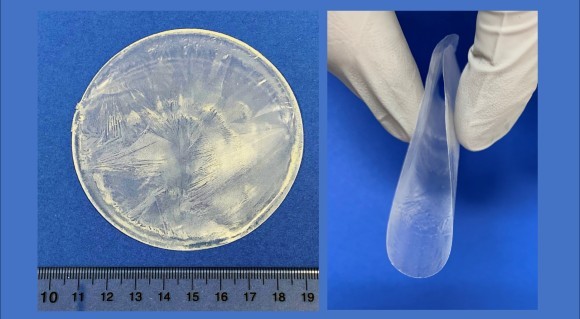
Mega Doctor News
by National Institute of Biomedical Imaging and Bioengineering
Newswise — Bioengineers have developed biocompatible generators that create electrical pulses when compressed by body motions. The generators are made up of self-assembling “piezoelectric wafers” which can be made rapidly and inexpensively to enable broad use of muscle-powered electromechanical therapies.
Piezoelectric materials such as ceramics and crystals have a special property of creating an electrical charge in response to mechanical stress. They are used in numerous devices including ultrasound transducers, vibration sensors, and cell phones. In medicine, electrostimulation using piezoelectric devices has been shown to be beneficial for accelerating the healing of wounds and bone fractures, maintaining muscle tone in stroke victims, and reducing chronic pain. However, the lack of biocompatibility—resulting in stiffness and toxicity—has stalled progress in the field.
Now bioengineers at the University of Wisconsin’s Department of Materials Science and Engineering have developed implantable piezoelectric therapeutic devices. The wafer-thin, flexible devices take advantage of the fact that non-rigid, nontoxic biological materials such as silk, collagen, and amino acids also have piezoelectric properties.
The team, led by Xudong Wang, PhD., professor of Materials Science and Engineering, created a method for self-assembly of small patch-like constructs that use the amino acid lysine as the piezoelectric generator. The self-assembly process incorporates a biocompatible polymer shell that surrounds the lysine as the polymer/lysine solution evaporates. The chemical interaction between the inner layer of lysine and the polymer coating are critical for orienting the lysine into the crystal structure necessary for it to produce electric current when flexed.
“This work is an outstanding example of using the chemical properties of the materials to create a self-assembling product,” explains David Rampulla, director of the Division of Discovery Science and Technology at the National Institute of Biomedical Imaging and Bioengineering, which supports the research. “The process used is rapid and inexpensive, making production of such wafers for therapeutic applications feasible. That the wafers are biodegradable opens the possibility for creating electrotherapies that could be used to accelerate healing of an injured bone or muscle, for example, and then degrade and disappear from the body.”
The team did a number of tests of the properties of the piezoelectric wafers. Wafers were placed in the leg and chest of rats. The leg movements and chest movements compressed the piezoelectric wafers enough to create an electrical output. Blood tests that were done after the transplanted wafer dissolved in the rats showed normal levels of blood cells and other metabolites indicating there were no harmful effects from the dissolved implant.
Wang stresses the simplicity of the team’s elegant work that can turn muscle movements into potentially game-changing therapeutic approaches. “We believe the technology opens a vast array of possibilities including real-time sensing, accelerated healing of wounds and other types of injuries, and electrical stimulation to treat pain and other neurological disorders. Importantly, our rapid self-assembling technology dramatically reduces the cost of such devices, which has the potential to greatly expand the use of this very promising form of medical intervention.”








